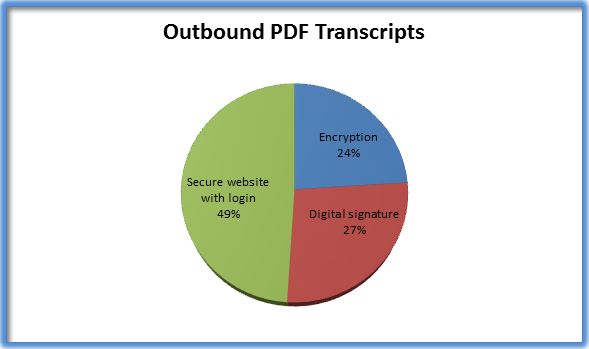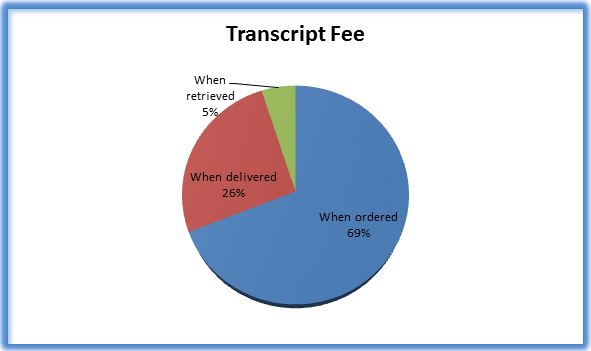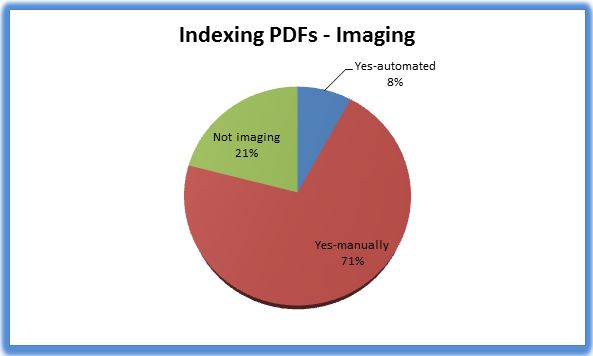Introduction and History
AACRAO and the AACRAO Standardization of Postsecondary Education Electronic Data Exchange (SPEEDE) Committee have been at the forefront of the development of electronic student records exchange. When the AACRAO SPEEDE Committee was first appointed in 1988, computers were still in their infancy and few people owned a home computer. The development of a standard format and server network for the exchange of electronic records was a truly visionary achievement resulting in the first SPEEDE EDI format, released in 1990. It helped pave the way for significant changes in the way student records and data are exchanged, and how institutions conduct their business processes. The server network (University of Texas at Austin Server, established in 1997) reached a milestone in January 2013 after exchanging its 35 millionth electronic education record.
In 2008, AACRAO appointed the Electronic Transcript Task Force to examine the current state of technology for electronic transcript exchange, describe best practices, and forecast future developments (Transcript Task Force Final Report). One of the conclusions of the report was that while there were well-defined standards and best practices for transcript exchange using EDI (Electronic Data Interchange) and XML (eXtensible Markup Language), AACRAO had not yet developed best practices and guidance for the exchange of transcripts using an increasingly common PDF format. Bob Morley and John “Tom” Stewart also noted in their chapter on electronic records in the AACRAO 2016 Academic Record and Transcript Guide that the “production and dissemination of PDF transcripts are not guided by any standards, guidelines or best practices to date."
The AACRAO SPEEDE Committee was tasked with developing best practices and guidelines for processing electronic portable document format (PDF) transcripts. This document represents that compiled list of best practices for PDF transcript exchange.
Development of Best Practices
A 19-question survey was developed by the AACRAO SPEEDE Committee in spring 2013 to learn how institutions process both inbound and outbound PDF transcripts. The survey went to the following distribution lists:
- AACRAO membership via AACRAO Connect
- P20W Education Standards Council (PESC) Education Record User Group (ERUG)
- SPEEDE-l listserv
- University of Texas at Austin Server registrants
The survey closed May 1, 2013 with a total of 98 submitted responses from both Admissions and Registrar areas, with the majority of responses (76%) representing the Registrar area.
Survey results were analyzed by the AACRAO SPEEDE Committee and consolidated into the best practices described in this document. For the purposes of this document, the term “Best Practices” represents the results of the survey. Also included are AACRAO SPEEDE Committee member experiences gleaned from approximately 25 years of committee membership (committee mission and goals can be found at the end of this document). Committee members represent institutions from across the United States and Canada, and encompass various areas of a college/university including Registrar, Admissions, Enrollment Management, and Information Technology. Many have been involved with successful electronic data exchange (EDX) implementations at their respective institutions, and have shared those experiences at AACRAO national, regional, and state conferences. Some members are also EDX representatives for their respective state or province.
The AACRAO SPEEDE Committee aspires to foster and expedite the secure and effective transition from paper to electronic sharing of education records in the higher education community. The committee does not endorse any particular third-party provider, company, or organization that offers products and/or services for sending/receiving education records electronically.
PDF Best Practices
GENERAL
The survey showed that 51% of survey respondents are sending PDF transcripts; 85% are receiving; and 39% are doing both. Of those currently sending PDF transcripts, 82% use a third-party provider.
Of the respondents receiving PDF transcripts, 91% receive PDF transcripts from between one and five different third-party providers.
Of those sending PDF transcripts, 18% create their own PDF without the assistance of a vendor service. Institutions creating their own PDF documents should ensure that their security features and process protocols adequately protect the authenticity of the document and student data. In addition, sending institutions should communicate with receiving institutions to build a trusted relationship and ensure acceptance of the PDF document as the official transcript of the student academic record when the process protocols and security standards you have set are followed.
Over the past 5-10 years, the number of institutions using third-party providers to process PDF transcripts has increased significantly. This increase may be due to:
- Mandates for transcripts to be provided to state and province education agencies and to the United States Department of Education for statewide longitudinal data reporting.
- Institutions needing to reduce costs and operate more efficiently.
- Students wanting immediate transcript delivery to the destination.
- Institutions wanting to improve student services.
In addition to colleges and universities, PDF transcripts are also going to alumni, employers and potential employers, application centers such as the Nursing Centralized Application Service (NursingCAS) and the American Medical College Application Service (AMCAS). According to the American Council on Education (ACE), PDF is also the format utilized to create the approved Joint Service Transcript which is the official representation of servicemember military occupation and training. This replaces the former Guard Institute Transcript, the Army/American Council on Education Registry Transcript System (AARTS) and the Sailor/Marine American Council on Education Registry Transcript (SMART). For more information, visit the ACE website.
BEST PRACTICE #1: Understand and select the appropriate security for PDF transcripts.
Survey respondents using a third-party provider indicated the most common method of sending PDF transcripts is via a secure website with login.

According to a PDF white paper published by PDF-Tools.com, PDF is appropriate for processing sensitive documents such as student academic transcripts because it supports encryption, access control, and digital signatures. PDF transcripts can be encrypted, which means the contents cannot be reconstructed without knowledge of a password. Various methods for delivering passwords for encrypted files in a separate message ensure security is not compromised.
As PDF technology has advanced to include multiple technologies, the education industry has taken advantage of this more intelligent file format, creating a new PDF standard for the education record. In 2011 PESC developed and approved our next generation PDF transcript. The PDF serves as a container for the embedded XML Transcript, enabling data to be sent and extracted as part of the electronic transcript process. This provides the institution the opportunity to ingest the XML data into a SIS or Transfer Articulation System. These PDF documents may also contain other documents in various file formats including but not limited to MS Word, media files, another PDF document (e.g. transcript, diploma, course syllabi, dissertation, publications), or EDI.
Survey results showed that only 3% of those sending PDF transcripts include embedded XML or EDI. This survey question allowed for additional explanation, some of which are highlighted below:
We are receiving these only from out of our jurisdiction, so the XML is not immediately relevant. However, in general terms I would prefer that the XML was available.
If the embedded XML would allow upload into our SIS system, we would prefer to receive it.
I would prefer to receive embedded XML as it would allow us to take advantage of a "drag and drop" feature of our software to post transfer work.
It would be nice to be able to receive these with key information so they can be electronically loaded either with embedded XML or otherwise.
Depends on how it could interact with Datatel systems…[I]f things such as course descriptions/syllabi are embedded into the transcript, that would be a great time-saver…[and] keep us from having to research the course description…[S]tudent may receive more credit because we can verify all components included in the class.
We run them through an imaging system and then auto articulate through Banner.
I think that I would prefer to [receive embedded XML] because…that might work better with our PeopleSoft system.
BEST PRACTICE #3: Understand the various costs associated with transcript orders, and determine the appropriate time to collect the transcript fee.
If using a third-party provider, most pricing options are similar and may include :
- Base charge per transcript order
- Additional charge if document contains electronic signature
- Additional charge for rights management of the document
The actual charge may occur when the transcript is ordered, when it is delivered, or when it is delivered and opened by the recipient.
Of those institutions that indicated they charge a transcript fee, most apply the charge when the student orders the transcript.

BEST PRACTICE #5: If using an imaging system to capture PDF transcripts, use automated indexing for improved efficiency.

Many automation opportunities exist for the processing of PDF transcripts. Some examples are document import, indexing, and even content extraction. Automation can result in reduction of manual errors and potentially decrease processing time. Institutions are advised to identify automation opportunities that make sense based on their process and priorities.
Conclusion
The AACRAO SPEEDE Committee anticipates that these best practices and survey responses will provide some guidance to professionals in the Education Industry. As we all strive to find more efficient ways to serve our students we can learn from each other’s experiences and those of industry leaders. We appreciate the input and insight from survey respondents and are grateful for the opportunity to speak to Tom Black, Associate Vice Provost for Student Affairs and University Registrar at Stanford University, about his thoughts on the PDF transcript. Tom advocates for the secure exchange of electronic student information through his participation in AACRAO events and was recently featured in the AACRAO Connect Spotlight Roundup for the Groningen Declaration. Tom shared these words of wisdom that eloquently sum up the benefits of PDF usage:
Standards have their place: to ensure interoperability and service quality. It is a rare occurrence for a standard to spur innovation. The 2011 standard for PDF transcripts is one of those that will encourage changes in the way colleges and universities go about sending the official records. The intuitive nature of the standard makes it acceptable to officials in other nations as well. For a time, the PDF standard will serve us well as we adapt our services for the 21st century.
Standards require cooperation in order to succeed, therefore institutions must all work together to succeed in providing improved services to our students – simultaneously preserving the integrity of our institutions and student data while leveraging advances in technology.
As the PDF transcript technologies and processes continue to mature and additional questions arise, the AACRAO SPEEDE Committee welcomes any questions, comments and best practice updates at speede@aacrao.org.
AACRAO SPEEDE Committee Mission and Goals
The AACRAO SPEEDE Committee is a professional development committee within the AACRAO national organization. It was formed in the mid-1980s and has since remained active in the coordination, development, and implementation of international exchange standards in the United States and Canada by representing secondary and postsecondary education in collaboration with the standards-setting body P20W Education Standards Council (PESC). The Committee reports to the AACRAO Vice President for Information Technology.
The SPEEDE Committee’s mission is to develop, promote, and maintain standards for the electronic exchange of education records, in conjunction with appropriate national standards bodies, through:
- Standards Development and Maintenance
- Promotion and Education
- Training and Implementation Support
- Advisory and Oversight
The Committee aspires to foster and expedite the transition from paper to electronic sharing of education records in the higher education community